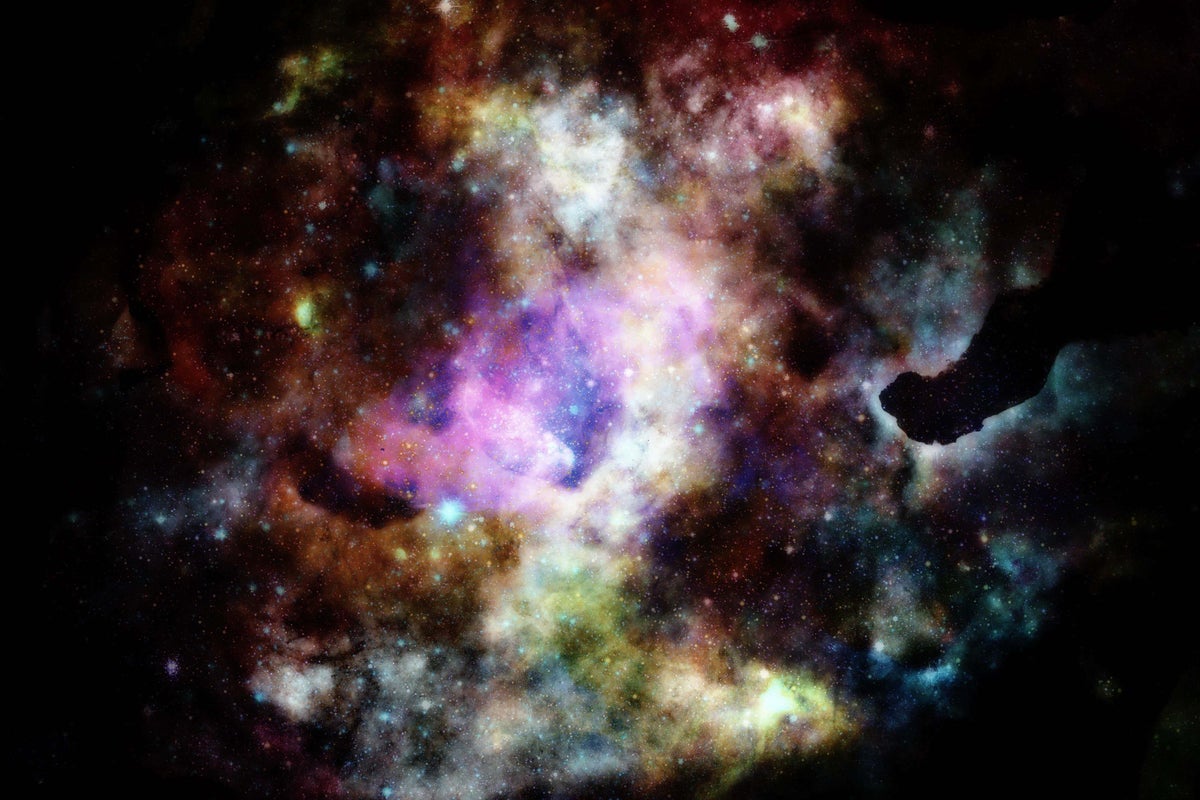
The Universe may not have started with the Big Bang, but instead “bounced” out of a massive black hole formed within a larger “parent” universe, according to a new scientific paper.
Professor Enrique Gaztanaga, from the University of Portsmouth’s Institute of Cosmology and Gravitation, said that the current Big Bang theory was problematic as the laws of physics “broke down” when used to explain it.
His new explanation, published in the journal Physical Review D, suggests that the Universe was formed as a result of a gravitational collapse in a larger universe which generated a massive black hole leading to a rebound or “bounce” causing our universe to emerge.
Professor Gaztanaga said: “The Big Bang model begins with a point of infinite density where the laws of physics break down.
“This is a deep theoretical problem that suggests the beginning of the Universe is not fully understood.
“We’ve questioned that model and tackled questions from a different angle – by looking inward instead of outward.
“Instead of starting with an expanding universe and asking how it began, we considered what happens when an over-density of matter collapses under gravity.”
Prof Gaztanaga explained that the theory developed by his team of researchers worked within the principles of quantum mechanics and the model could be tested scientifically.
He said: “We’ve shown that gravitational collapse does not have to end in a singularity and found that a collapsing cloud of matter can reach a high-density state and then bounce, rebounding outward into a new expanding phase.
“Crucially, this bounce occurs entirely within the framework of general relativity, combined with the basic principles of quantum mechanics. What emerges on the other side of the bounce is a universe remarkably like our own.
“Even more surprisingly, the rebound naturally produces a phase of accelerated expansion driven not by a hypothetical field but by the physics of the bounce itself.
“We now have a fully worked-out solution that shows the bounce is not only possible – it’s inevitable under the right conditions.
“One of the strengths of this model is that it makes predictions that can be thoroughly tested. And what’s more this new model has also revealed that the Universe is slightly curved, like the surface of the Earth.”
He added: “Furthermore, it could also shed new light on other deep mysteries in our understanding of the early universe such as the origin of supermassive black holes, the nature of dark matter, or the formation and evolution of galaxies.”
Prof Gaztanaga, who is the science co-ordinator for the ARRAKIHS ESA space mission, said that the four wide-angle telescopes on the satellite could help confirm the theory through its ability to detect ultra-low surface brightness structures in the outskirts of galaxies which he explained were essential for studying how galaxies grow and evolve.
Filipino forces and villagers struggle to live in China's shadow in disputed waters
Matt Vogt once chose dentistry over golf. Back home at the US Open, he's learned he didn't have to
Sweat, tears, devotion: Pilgrims cross the wilderness to honor the Rocío Virgin in Spain
Secrets of sauropod dinosaur revealed by fossilised stomach find
1,500-year-old Byzantine tomb complex discovered under Syrian war ruins
Two-million-year-old teeth transform theory of prehistoric human evolution







